Now, giving a little
break to the body, the crane construction:
The
geometry was
studied on paper first, then manufacturing began. The booms were made
from
sheet styrene and all the brackets etc. were glued on. |
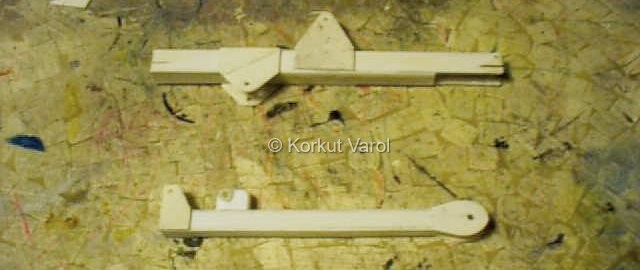
|
18 October 1999:
For
the rotating
body, an injection syringe seemed very suitable. After the necessary
cutouts,
the pedestal was given 12 bolts to fix it to the reinforced chassis.
The
bolts were made from pin heads. |
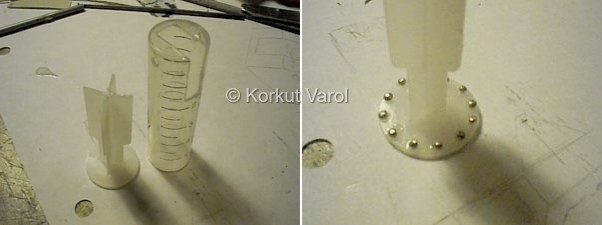
|
| Crane parts before assembly. |
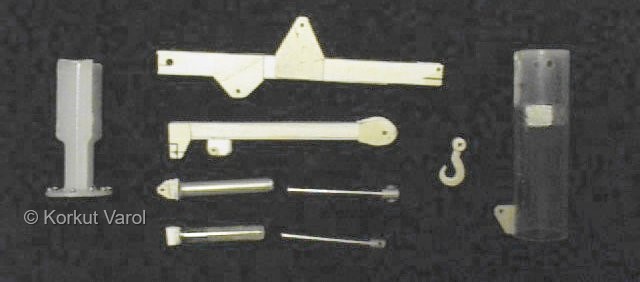 |
| Now the hydraulic
pistons and cylinders. The rods were from steel bar, 2 mm dia., and
polished
by turning against 1000 grit sandpaper. The cylinders and inner tubes
are
from ball-point refills. The inner tubes are given small deformations
so
that they exert a squeezing force on the rods. In this way, the booms
may
be positioned in any desired angle with a small load hanging. The
hydraulic
pipes were made from copper wire, and the brackets from styrene sheet. |
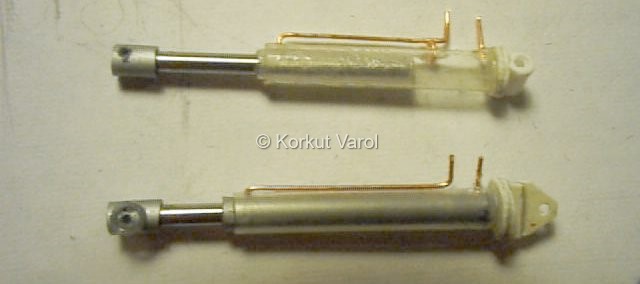
|
| These are the parts
of the crane with primer paint applied. The hook was hand-carved from
styrene. |
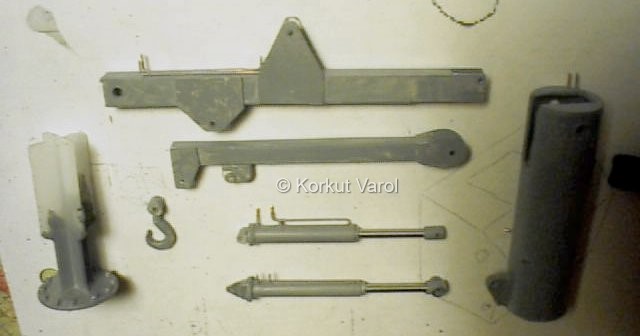
|
| The crane assembled waiting for the hoses. |
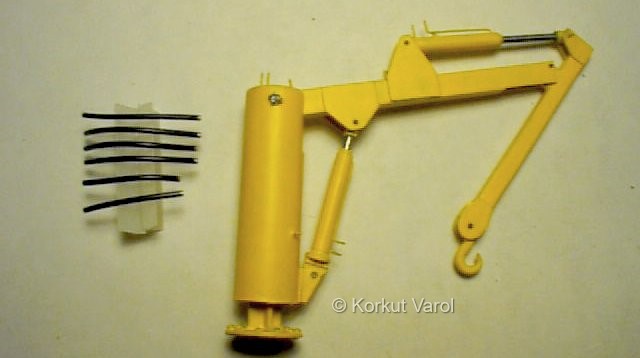 |
| The crane in assembled
and weathered form. The hydraulic hoses were made from wire insulation,
their ends painted to resemble unions. Dry brushing was used to
simulate
scraped-off paint. |
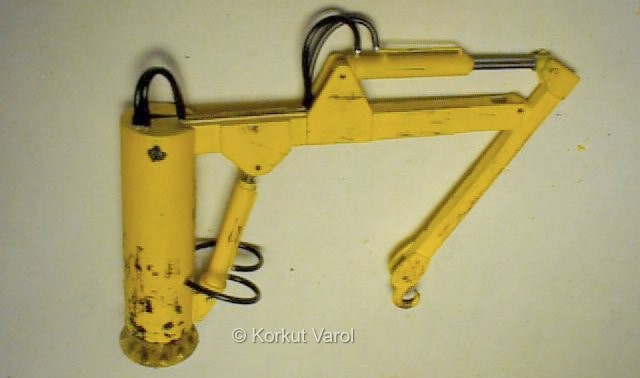
|
23 October 1999:
Now a jump to the
junk accessories. One item was a 350 V-8 block from R&D Unique.
But
this was raw as seen (I took the photo after drilling the first set of
holes) and should be made to look realistic. So I began to drill the
cylinders
first. |
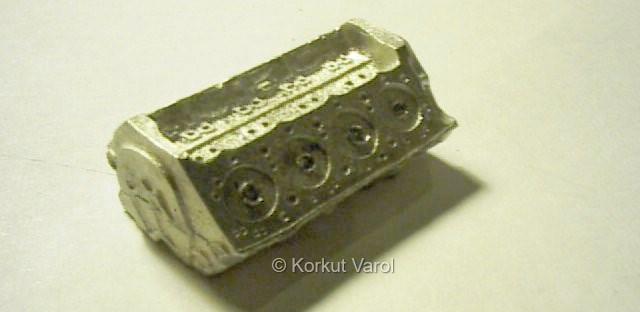
|
| The cylinders were
drilled in increments, the metal was too tender for any
mistreatment. |
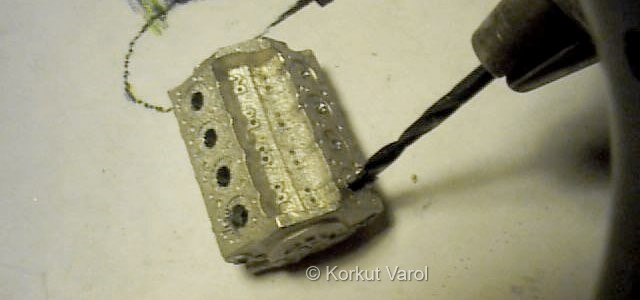
|
| After the cylinders,
the water and oil channels were drilled, as well as the pushrod holes
for
the valves. Then the top was filed to smooth as shown. |
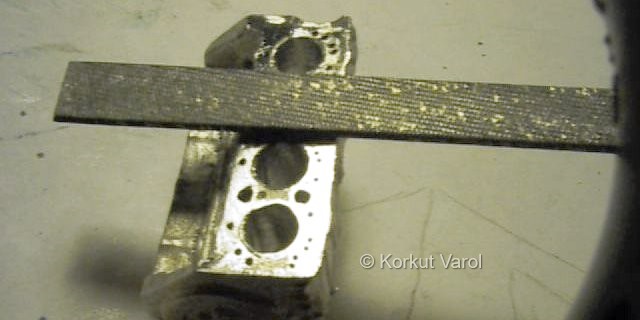
|
| Other machined surfaces
were filed to smooth as well. |

|
| Then the block was
painted in Chevy red. It would be made dirty afterwards. |

|
25 October 1999:
Now I assembled the engine, installed the ignition wiring and made some
dirtiness here and there. |
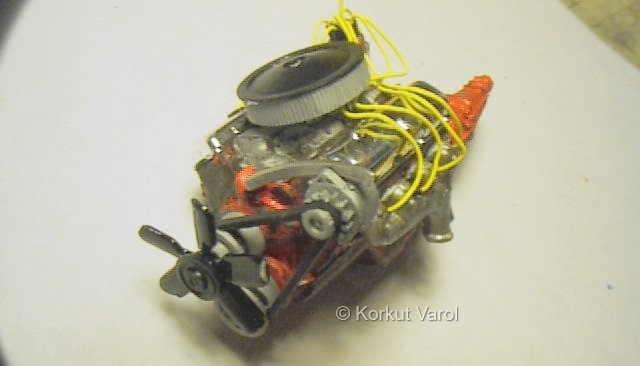 |
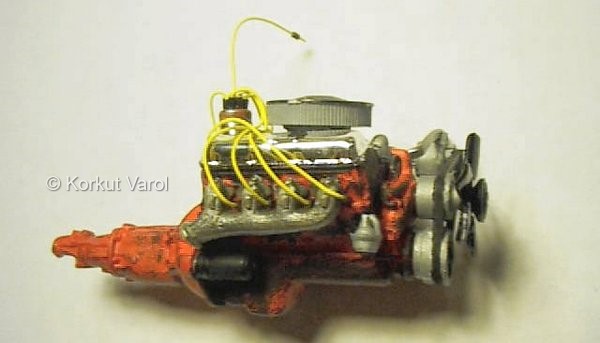 |
 |
31 October 1999:
And
now back to
the body and weathering. Before the primer, places prone to rust were
painted
dark brown (Model Master 1583 - it says it's rubber but looks more like
rust.) After the primer, matt flat light blue (Model Master 1562) was
applied,
and as the final coat, gloss light blue (Humbrol 47) was sprayed. After
curing, the final paint was dulled, and where necessary, sanded further
with 1200 grit sandpaper, to recover the different undercoat, the
primer,
or the rust. This is the view of the truck bed. The bottom was not
treated,
since it would have a wooden bed to cover it. |
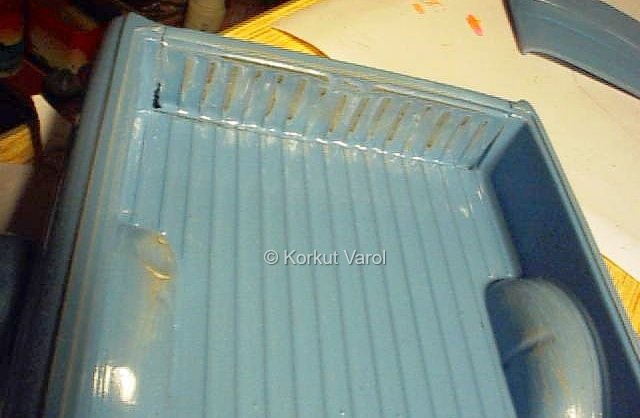
|
| The following three
pics are some close-ups of dents and weathering. |
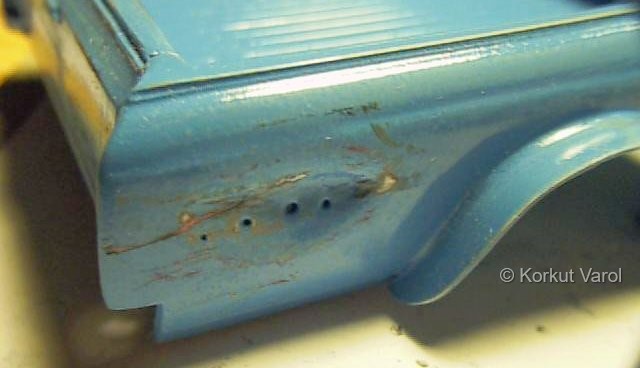
|
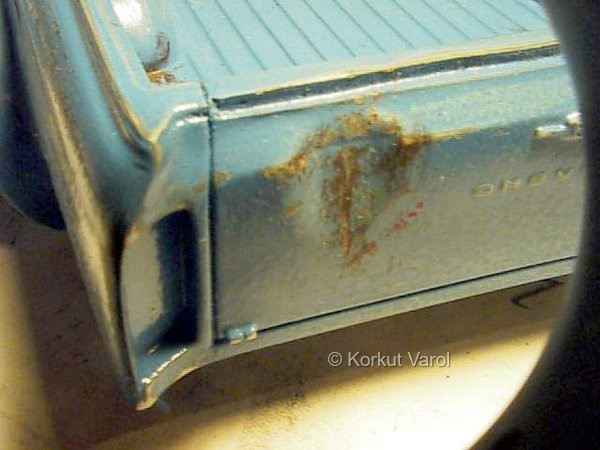
|
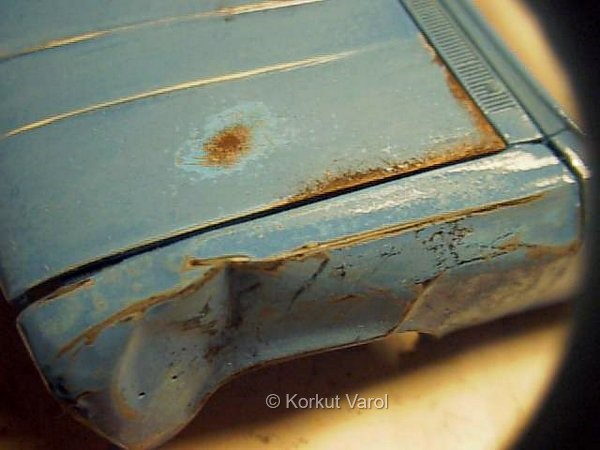
|
...............
|
 
|



